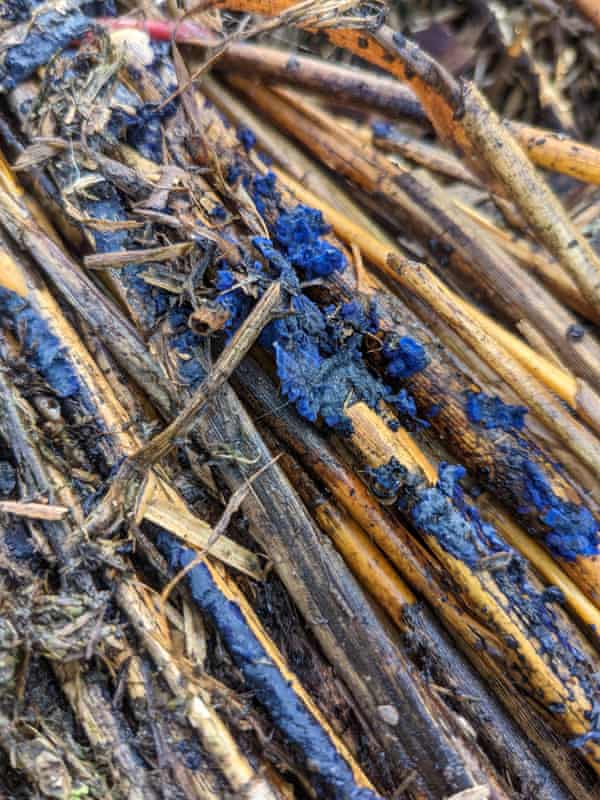I had seen it so often I almost didn’t pause to look. I was re-ridging a thatched house on Paignton seafront. Below me and to my right was the old stone-built harbour; to my left, an arc of red sand beach backed by the Torbay arcades and beach huts as bright as boiled sweets. It seemed an unlikely place to find a rare woodland species.
But as I pulled off the thin lengths of ash that make up the diamond pattern on the old ridge (on top of the roof), there it was – the familiar bright purple pattern, spreading in blotches across the dead wood. I see this growth on over half the thatched roofs I work on in Devon. I have always assumed it is a lichen of some sort. But what is it?

I took a photo, and called on the help of Twitter. I learned that it isn’t a lichen at all, but a crustose fungus, Terana caerulea – the cobalt crust. It is, according to Brian Eversham from the Bedfordshire, Cambridgeshire and Northamptonshire Wildlife Trust, rarely recorded in south-west England (most UK records are from south Wales). Brian warns that it may become even rarer as another fungus – the Hymenoscyphus fraxineus that causes ash dieback – reduces populations of its favoured tree.
Thatch is a welcoming home for all sorts of fungi, as it provides the damp conditions they thrive in. Welcoming, but impermanent: ridges are stripped and replaced every 10 or so years in Devon, roofs rethatched every 20 to 25 years. Moss and lichen are often removed with a mechanical hedge trimmer to aid water runoff (doing this also removes an inch or so of reed, so in my view it is usually best avoided). But in spite of thatchers’ attempts to remove them, fungal bodies always find a way back to the roof.
My purple cobalt crust seemed too beautiful to throw away, so I slipped the piece of ash wood into my pocket and took it home. It’s sitting in front of me as I write, in the dark of a cool clay jar. A little duller perhaps, but still unmistakably crusty and unmistakably purple.